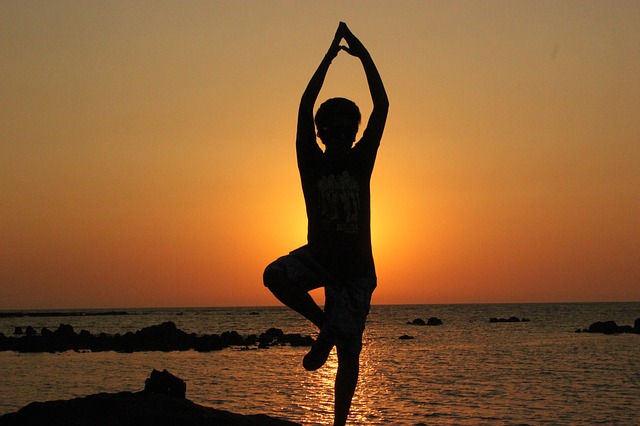An issue that has been coming up for a lot of patients lately is how to keep their adjustments in place. They will come in to see me for some complaint, I put things back together, and they are fine for several days to a couple weeks. Then for seemingly little reason their back, or their foot, or their hip, or whatever will go “out of place” and they will have to come back in for another adjustment. What is this all about? Why don’t things stay put where they belong?
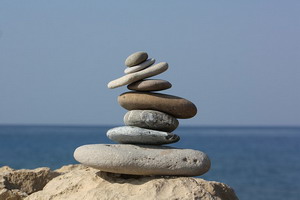
There are a number of answers to this trouble including the ever popular ‘stress’, low blood sugar episodes, work ergonomics, and even poor sleep and energy levels. But the most popular problem I am running into right now isbalance issues. I am not talking about vertigo where the room feels like it is spinning around. What I am talking about is much subtler, so subtle most of you are not even aware it is happening – or not happening.

Every time you contract any body muscle, a whole bunch of other muscles react to that contraction by either letting go or also contracting. This elaborate orchestration is handled by a part of your nervous system called your proprioceptive system. This system provides constant feedback to your brain’s balance system. It measures how tight or loose every muscle in your body is at each moment and how gravity is pulling on your joints. It does this with little stress and strain measuring receptors all over the body, particularly in the muscle bellies and ligament attachments.

When you walk to the fridge to grab a sparkling water, as your hand reaches forward your neck and upper back muscles have to tighten up to counter the downward and forward pull of the weight of your arm. Those muscles have to instantly adjust to the added weight of the water when you lift up on the bottle. Your low back, hip, and leg muscles have to supply extra tightness to provide a solid foundation so you don’t tip forward. Literally you engage your whole body just to grab a drink.
Just contracting a muscle, most any muscle, simultaneously requires you to relax the opposing muscle at exactly the right speed to match the contraction of the first muscle. If this smooth simultaneous action dose not happen correctly, the joint that both muscles are attached to will get pulled and jammed. Considering all the different actions involving the huge number of muscles that come into play with even the simplest of activities, it is a wonder that all our joints are not being jammed all the time. Jammed joints produce pain and inflammation – the feeling that something is ‘out’.
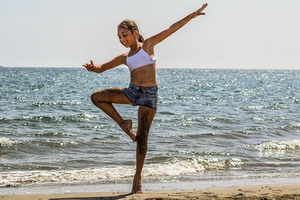
So what I am saying here is that it is the smooth and effective action of the proprioceptive nervous system that is the single most important player in keeping your body joints feeling fine. If your balance nerves are not working well, then your body can not ‘hold’ and adjustment. Your body will constantly be complaining about sore joints and muscles. It does not require you to lift something too heavy or chop two cords of firewood or lift that two year old into its car seat to pull your back out. Just reaching for that bottle of sparkling water is all it might take for you to suddenly have a pain in the back. It is all about the balance coordination system. How well is it working?

Try a simple test. I do this with patients all the time. Close your eyes and see how long you can stand on one foot. Do this close to something you can grab a hold of in case you start to fall. A healthy response is to balance 15 seconds with your eyes closed. If you can not do better than two seconds, then you are classified as a serious fall risk. Testing eyes closed is a way to test the proprioceptive balance system in your knees and feet. With your eyes open you are using a visual balance system, which is way too slow to catch you if your foot slips and you start to loose your balance. So how did you do?
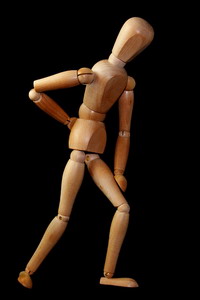
Patients that do not have good balance coordination in their knees and feet are not going to be able to maintain a stable pelvis and hip structure. This in turn produces chronic low back instabilities. This moves up the spine to produce instabilities in the mid-back, neck, and even into the jaws and head. Everything is connected and everything affects everything else. I generally focus on building stability in the feet, knees, hips, pelvis, and low back, but with some patients the trouble is poor muscle coordination in the shoulders producing chronic rotator cuff issues and stiff joints. This can travel up to the neck and down to the elbow and hand. This balance coordination stuff is important everywhere.
So what can we do to improve our balance coordination system?
Step number one is to practice balancing on one foot with your eyes closed every day. You will be surprised at how fast your system will improve. Find a doorway or counter you can put your hands on/around to catch yourself as you start to lose your balance and just go to work. Practice for a couple minutes a couple times per day. This system needs constant work. These nerves are of a type that the body will break down if you are not using it for a week or two. They are like muscles where just two weeks of inactivity (like bed rest) will cause a 50% loss of muscle tone. These nerves are like that.
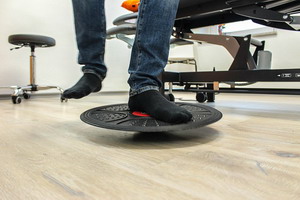
Step two is to advance to standing on an unstable surface like an Airex pad, a rocker, or a wobble board.Start by balancing with your eyes closed with both feet on the unstable surface and then after you’ve mastered that, then try balancing on just one foot with your eyes closed. I also recommend working your low back and hip balancers by sitting on a big therapy ball for half an hour a day and bouncing around. If you want to get fancy, you can do a number of balance exercises like the Superman position on the ball.
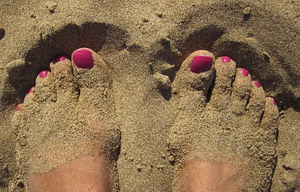
For foot stabilizer action, the best thing is walking barefoot in the sand. I know this is usually not available, so just walking around barefoot as much as possible is good – plus wearing ‘barefoot walking’ shoes is a good choice.
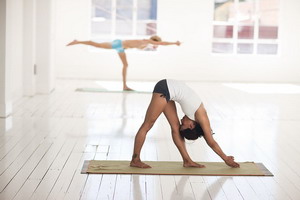
Joining a good Yoga class or Tai Chi class is an excellent way of building balance. If you really want to show off, you can do your Yoga while you are balancing on your paddle board on the lake. Yes, they actually have a Yoga paddle board class locally.
Move it or lose it is the absolute rule in the body. You cannot spend your day in front of a computer or on the couch and expect your joints to be healthy and work well. You have to move them. More than that you have to challenge them with balance activities. Walking in a swimming pool might be good for lubricating the joints, but it does not challenge the balance system or improve strength for when you are on land.

Building balance has to be approached slowly and carefully. Obviously anything involving balance carries the risk of loosing your balance. For instance, with my sweetie Ellen we do balance exercises on one leg every morning because her stroke specifically destroyed the balance center in her brain. To do her balance, we stand her beside the bed so that if she falls it will be onto the bed. She will balance on the ‘bad’ leg while swinging her good leg around. She will hold on to my hand with her stroked hand to engage the balance nerves in that arm as well. No matter what your condition, most of you can engage in balance activities to build better balance coordination and therefore better joint stability.

The media has been pounding the importance of exercise for years now. Yes, exercise is important, but balance is just as important if not more so. Exercise equipment at a gym is designed specifically to eliminate balance to reduce injury. Financially gyms do not promote balance activities, although we are now seeing at least some gym balls and balance boards starting to show up. Free weights are much better for building balance than the weight stacks and specialized equipment. So getup, close your eyes, and balance!
